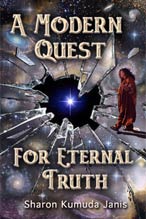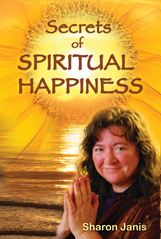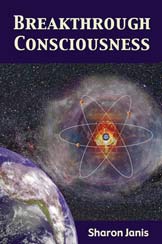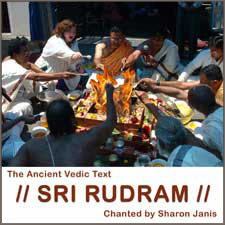The Self is Consciousness

by Sharon Janis
We as individual beings, limited by the very senses and mind that feed us information, can never know or fully comprehend the vastness of what is happening here, of this universe into which we have been born.
No matter how many astrophysics books we read, and no matter how far our telescopes can see, we will be seeing only small, seemingly unrelated events and objects, due to our inherently limited perceptive and conceptual abilities.
And so, for the benefit of uplifting our mental viewpoints, we can look for analogies, for microcosms of the laws of nature. This universe is filled with mirrors. The same patterns of nature are reflected on level upon level of manifestation, whether in biology, psychology, spirituality, astronomy, or any other expression of knowledge. The electrons orbit their nucleus as our own earth turns around her sun. Circular movements pervade the galaxies, and many other patterns also pervade the physical and quasi-physical universes. One of these patterns is of an essential center or source of creation. From the seed, sprouts a tree, from an egg comes a living being, and, according to the wide variety of religious and philosophical sources, the entire creation, as we know it, has been born from various divine and metaphysical sources.
In Indian philosophies such as Kashmir Shaivism, this seed of the universe is not a God or Goddess or an unconscious set of scientific events, but rather is a rarely understood form of "Consciousness". This does not refer to the consciousness we come back to after we have been unconscious, although all the various forms of individual consciousness have their essential being within the greater Consciousness with a capital C. Our waking and dream states exist as but small waves within this great ocean of supreme Consciousness. In this context, "Consciousness" is another word for the intelligent force of the universe from which all experience, all objects, all thought, arises -- the universal dreamer who has dreamt us all into existence.
The very first statement of the Shiva Sutras, the revealed scripture of Kashmir Shaivism, is, "The Self is Consciousness."
In looking for an analogy of what this word "Consciousness" may be, it may be useful to turn to the microcosm of the dream, the mirror of the waking state. What if, in fact, the nature of this universe is similar to that of a dream? For centuries this question has plagued scholars. One king in India locked up all of the so-called "wise men" of his kingdom, because none could answer his simple question, "Which is real, the waking state or the dream state?" Of course, from our standpoint of asking this question in the waking state, we say that certainly the waking state is what is real. But what would we say if the same question were posed to us during our dream tonight?
How is the dream an analogy for this universe? In the dream, we exist in a certain world. We are a certain character, which may or may not be the same character we identify with in our waking state. We have friends, perhaps even enemies. Some of these people may be reflections of people we know in the waking state, others may be combinations of qualities we have seen in various people, or, of course, in ourselves. The dream feels real. We get scared by danger, and elated by good fortune. We do not think, "Hey, this must be a dream because these people and situations have appeared all of a sudden with no history". No. In fact, we do perceive a historical basis for the relationships and events in the dream. We remember that this happened before, or this person is an old friend of ours. All of these histories and relationships are created in the moment, but they appear as real; they feel as real to us as the three-dimensional picture we see through a holographic plate. The history is contained, or rather projected by the NOW of the dream.
Isn't it amazing that we have so many worlds right inside of ourselves. Amazing adventures, phenomenal escapades, incredible characters and plot lines. We are more prolific and creative than any Hollywood screenwriter could ever be. Jurassic Park? Ha! That is nothing compared to the worlds we "go to" every night in our dreams.
And so, having established the analogous relationship between the dream and the universe as such, we turn again to the idea of "Consciousness". What is it that creates the dream? Who is playing the role of all the characters in the dream, the friends and foes? From what substance are the objects in the dream manufactured? If you pick up a vase in your dream, it has "physical" qualities. It has weight and texture. It can break if you drop it. So is the vase made of glass, or clay, or metal? No. The vase in your dream is made of Consciousness. It may take on the appearance of glass or metal or clay, but the first-cause substance of which the vase is made, is Consciousness. We could call the other perceived qualities of the vase, "second-cause". For example, if, in the dream, we drop the vase and it was made of glass, it is more likely that we may cut ourselves on one of the fragments. This glass sharpness is a second-cause quality of the vase, which ultimately is made of nothing but your own internal creative consciousness. Second-cause qualities count for something, but are merely the surface of the ocean. They are the waves and sunlight dances we can see from land.
In the same way, Consciousness itself, the very same Consciousness that creates our dreams, has manufactured this so-called "waking state", this "real " world.
This is the first-cause behind all the people, objects and events of life. This Consciousness is what "IS", as our objective as well as our subjective experience. All of the volumes and shelves of books after books that analyze all of the various qualities of this world, are dealing in second-cause materials. Its not that the second-cause knowledge is wrong or bad in anyway. It is simply second-cause. It can only affect within its own realm. First-cause, on the other hand, is the mother of this whole creation. First-cause can change anything, create new worlds, create even new histories.
The use of time-based words such as "before" and "were", allude to the experience of time as we know and have catagorized it, into past, present and future. There are other possible views we could have adopted which would have described the phenomena of time differently, perhaps leaving us less limited in terms of our perceived need to proceed and think in a linear fashion. Even today there are remnants of cultures that use the same word to refer to "yesterday", "today", and "tomorrow". However most cultures in our modern world have seemed to agree to conveniently organize events in terms of cause and effect, before and after.
We are watching the train go by through a hole in the fence, and we think the head of the train is the cause of the subsequent box cars. Due to our small viewing hole, we are bound by time in terms of what we can perceive. And so, in true human form, we arrogantly assume that the "train" we are viewing, the world around us, is organized by that very same illusory, fragmenting, time, which is actually a quality of our own human perceptive mechanisms. It is only in time that we see the objects. It is only in time that we are individuals, separate from the wholistic, natural flow of life.
T.S. Eliot so beautifully expresses, "Time past and time future allow but a little consciousness. To be conscious is not to be in time. But only in time can the moment in the rose-garden, the moment in the arbour where the rain beat, the moment in the draughty church at smokefall, be remembered; involved with past and future. Only through time time is conquered."
The Bible quotes the Lord, that Supreme Consciousness, as stating: "Before Abraham was, I am". This insight of the eternal NOW. is nothing new, nor is it limited to any particular culture. It has always been available to those who either make the effort to know it, or have been thrust into the arms of this expanded view through difficulties or other profound circumstances.
So the question then becomes, what exists outside of time? What is before time was?
Jesus Christ prayed, "Let me have the glory with Thee that I had with Thee even before the beginning".
It is not that there was this Consciousness, and then after some "big bang", something else happened. This word "before", does not necessarily mean "before" in terms of time, or in terms of a spacial "place in line". This "before" is co-existing, it is simoultaneous. That Consciousness isthe "before" of all the objects, always and forever. It does not die. It cannot die, for it is life itself. This Consciousness is the material from which objects are made, but it is much more lofty than just that. We may use materials to create objects, but in this case the material remains unchanged and eternal, even as it creates the objects. It does not utilize energy to make something separate from itself. It does not give up anything from itself to create a tree. It is as the tree, and yet it is as itself, perfect and ever-treeless. In truth, this Consciousness is the one hand clapping. And all this universe, in fact, all the universes within universes within universes, are the sound that one hand makes.
So how can the Shiva Sutras state, "The Self is Consciousness"? How can we be something so great, so far beyond anything we have ever known?
Human personality is not an item, a stable object in time. It is, rather a flow. It is an interactive, ever changing light, which becomes fragmented into the many colors that make up each person's individuality. And so, it is possible for us to feel and act a certain way in one moment, and respond very differently at another time. For example, if you are in love, or are in a great mood, you may become very charitable toward the people around you, tossing out friendly smiles and kind words as you go through the day. But if you are in a really bad mood, you may instead find yourself impatient and angry with the very same people in the very same situations. This is the effect of unintegrated understanding and experience.
And so it is with this awareness of "The Self is Consciousness". We may catch a glimpse of our Self as Consciousness, and still eat too much, or make mistakes. History is full of brilliant, elevated beings who had severe difficulties in their daily lives. We see examples of this kind of fragmenting in the current crisis of the catholic church, where highly respected priests have fragmented so severely that they have molested the very children they were commited to uplift. The flow of harmonious consistancy with the most profound realms, can be experienced by "parts" of ourselves, and yet remain inaccessible to others. And so, it is important for each seeker of Truth to move toward an integration, to find a way to acquiesse the profound experience of Consciousness as it represents itself to us, with the appearance of objects of this world.
This line of thought implies that the existence of the objects, events, and people of this empirical world around us, is not really authentic. They only seem to exist. They do not really, ultimately exist as does Consciousness, which simply and profoundly, "IS". This is how we can move to integrate this higher knowledge, this Consciousness that is our Self, into our physical interactive realms. It acknowledges the mirage of manifestation, and yet, it points toward the source of that manifestation. We can live our lives with this understanding. We can maintain a dual awareness which is still fragmented in a sense, but connected at the same time by the thread of "The Self is Consciousness".
Two analogies come to mind in describing this dualistic state of knowledge. One is the dream state, and the other is Robert DeNiro. Lets start with Bob. When we go to a movie and watch this horrible, mean, bad guy on the screen, we are having an experience which is analagous to the one alluded to by this sutra. We are afraid of this guy. We may even hate him. We want bad things to happen to him since he's such a bad guy. And yet, at the same time, we know its really Bob. Probably a very nice guy who has lots of money and goes to Hollywood parties and such. Certainly, we don't really hope a bomb will explode in his face. Nor are we going to run up to the screen to try to save his poor victim.
In the space of watching a movie, it is clear how we allow ourselves to fall for the objects that "seem" to exist, in this case this dispicable character, even while we know "deep down" that if we saw Bob on the street, we might want to ask him for an autograph. "The Self is Consciousness." "The villian is Bob."
I had an experience of this a couple years ago while working on a film with body-builder Franco Columbu. Franco is best friends with Arnold Schwarzenegger, and so I had quite a few opportunities to get to know Arnold as well. Arnold loved Franco, and always wanted to spend time with him. But Franco, who certainly loved Arnold as well, would sometimes blow him off. Who knows why. It was just his nature. So one day, Franco had his secretary tell Arnold he was with me in Burbank all day, working on the film, though he was actually in his office all day long. The next day, I was working out at the gym, when all of a sudden, the Terminator himself came running over to me in mock anger. He blurted out, "You! Because of you I never get to see my friend anymore!"
I froze. And I laughed. At the same time. I knew it was Arnold, and that he wasn't really going to blow me away or pick me up and throw me through the window. But, I had seen him do this so many times in movies, with the same kind of "anger", that I fell for the illusion and felt a little bit afraid at the same time. Fun afraid.
What would life be like if we were able to relate to the objects and events around us, while knowing at the same time that only Consciousness is existing as them. Certainly, our experience would become more interactive. We would enjoy even the fear, knowing it was "fun afraid". We would watch the play of our lives as we watch a movie. Sometimes it is a comedy, sometimes a romance, and other times it is a horror story. But just as we find these cinematic illusions entertaining enough to plop down our seven bucks to watch them, in the same way, we can learn to be entertained by the objects and events of our own movie, our own life.
In the Stanford University dream lab, students have been trained to become lucid dreamers. As soon as the rapid eye movement (REM) begins, which signals that a dream is in progress, lights are flashed over the students' eyes. These lights are not bright enough to wake the students from sleep, but they have been pre-established as a signal for the student to become lucid within the dream. With training, these students learn to become aware that they are in a dream. They realize that although objects seem to exist (in the dream), Consciousness (their own internal, creative force), is". And from this space, they can expand their level of interaction with the "world" of their dream. Pamela Lee can say yes to their request for a date. Their very lottery numbers can be called. They can soar above the mountains on wings of light.
So the idea here is to become "lucid wakers", to know that behind the appearance of all the objects of this world, Consciousness is. As long as we are in a body, with all of its receptive, perceptive and interpretive mechanisms, the objects will seem to exist. Various wavelengths of energy will impinge on the rods and cones of our visual systems, and be translated into color. Other waves will be transformed into sounds, and given meaning through our memory systems.
In the Pratyabhijnahrdayam, it is said "Supreme Consciousness, of Her own free will, projects the entire universe upon her own screen." This screen, this energy, IS. The images that appear on the screen, seem to exist.
We can think of Consciousness, for analogy sake, as an immense ocean, vast and teeming with untold legions of life. Upon the surface of this ocean, there is the play of waves. For those who live on the surface, who conveniently enough can be called "surf-ers", the specific qualities of each wave are important. These surfers look for the height and the break of the waves, and keep track of the tides and locations of the biggest and best waves for what they do -- "surf-ing". Of course, this analogy also relates to the waves of life, the waves of object appearance and disappearance, that we all know so well.
However, the ocean itself remains unaffected by the nature of its own waves. The ocean gives up nothing to create the waves, nor is it affected by the movement or quality of those waves. And if the waves were to vanish, yet the depths of the ocean would remain through all, unaffected. The ocean is, as Consciousness IS.
It is in the full and complete present that no objects can be perceived. They simply vanish as the mirage that they are. In the human brain, experience is recorded as memory. There are many kinds of memory: long-term, short-term, repressed, regressed. In its essense, all brain function is a function of memory. Even our moment by moment experience is a result of amazingly fast interactions between various recording and memory systems within the brain. The senses record information and relay this recording, or memory, to other areas of the brain, which then proceed to give meaning and place words and feelings all over and around the sensory information. The words and feelings all come from memory. It doesn't even matter at this point whether some of these memories are from some kind of archetypal "collective unconscious", or from "past lifetimes", or from some kind of genetic codes that exist within our DNA or other informational transfer systems of the body. All of these may well play a part, but for the sake of the current point being made, it is only important to recognize that our experience of the world is extremely interactive, and is always based on and dependent upon our memory systems, and are therefore based on time. The idea of objective perception crumbles.
It is possible for a person to taste a glimpse of this state of being fully present and free from objects. Sometimes this happens when we sit quietly and remove as much external input and internal thought process as possible. Meditation. We fall into a space in which there are no objects. There are no thoughts. There is no "us". Just Consciousness IS. At other times, we may be so shocked by a sequence of events, or in such great pain or even intense fulfillment, that our mind stops, and we touch that space of "is". Its not that this space is something we have to look for, something that is outside of ourselves, different from us. That Consciousness remains through all unaffected. It is the undifferentiated light which shines through all. We all know that presence, that present. The essence of "now". It is our own presence.
As we lay in bed preparing for sleep each night, perhaps we'll think a bit about the objects in our life, the events of the previous day, or the expectations for the following morning. But at some point, if we are to enter into the sleep state, all of the objects must vanish from the stream of awareness. When they vanish, there is only Consciousness. There is utter stillness without any content. No body. No desires. No Brad Pitt. No objects at all. They vanish into the ocean of Consciousness like so many waves, crashing and then dissolving into its vast nature.
In some scientific circles, this state is called the hypnogogic state. It is replicated for experimentation purposes, by creating a state of sensory deprivation in the subject. Not just deprivation in terms of turning out the light or turning off the radio, but rather a state of sensory steadiness. For example, the visual system is fed a steady and unchanging field of information. One way to do this is through the ganzfeld technique, where halves of a ping-pong ball are placed over the subject's eyes with a light shining toward them. This creates a steady and unchanging input of light into the visual system. Not just light, but the same light. The same shade of light, and the same intensity of light. With the eyes open or closed. looking left or right, the input remains consistant. Then the auditory system may be "tricked" into this hypnogogic state, by feeding it what is called "white noise" - random, constant, undiscernable noise. Like the noise that comes from a household fan.
But we don't really have to do all this to find that space where objects vanish. When we are falling asleep, we fall into this space naturally. We have no choice. We fall into the "IS". Later, as we go through the various stages and adventures that carry us to unknown realms all night long, we may find ourselves again in the company of "objects". But during the transition between the waking ans sleep states, between what we call "consciousness" and "unconsciousness", there is a moment when past and future collapse into the now. This transition into so-called "unconsciousness" is, in fact, a transition through the space of true Consciousness. Sometimes our subjective labeling systems take ironic twists.
In ths Shiva Sutras, this space of Consciousness is referred to as the "fourth state of consciousness", after the waking state, the dream state, and the deep sleep state. It is said that this fourth state, the turya state, is poured through all the other states like oil poured into water. Because of the nature of oil, it remains unaffected through water. It does not become the water, nor does it mix with the water. However, in the case of this turya state of consciousness, it is the source and backbone of all the other states. It exists simoultaneous to all the objects, just as millions of micro-worlds far beyond our view, are co-existing along with the reality we know, down to and even far beyond the millions of electrons that are circling within the dot of this "i". It is not a question of whether the dot exists or the electrons. Both exist equally. This universe is a mass of co-existance, unending and infinite. Object upon object. Physical objects, subtle objects, etherial objects, internal objects, unfathomable objects, all integrated and coexisting within and throughout one another, multidimensionally. And yet, when the waves of all these objects subside, when the objects vanish, yet remaining through all unaffected, Consciousness IS.
If we accept that nothing is outside of this perfect, all-encompassing Consciousness, then the next step is to integrate this understanding into our experience. From this space, it is not possible to judge or put down anything or anybody, including ones own self. Consciousness is the great equalizer. This knowledge also creates a shift in terms of the notion of personal responsibility. Its not that this is a liscense to go out and kill someone you don't like, or to throw trash on the grounds of a park. Once again, there is this dual experience. There is the integrity and power of righteous living, living in harmony with the world around us. And at the same time, there is a higher view, which does not exempt human beings from the grand dance of the perfection of nature.
It is funny how we have decided that if animals do something, it is natural, but if we do something, it is "man-made" and therefore unnatural. What if we were to shift our perspective a bit, and look upon all the activities and creations of our species, all the buildings and freeways and knowledge and space ships and media and even industrial waste, as a part of nature, as existing within this Consciousness. It may be difficult for us to see "bad things" as part of nature, however, this resistance is based on linear, time-based thinking. If everything ultimately exists within Consciousness, then the so-called good, bad and the ugly are all there, independent of our culture-based judgements.
With the imagined separation we have created between ourselves and the great Tao, the flow of existence itself, comes a plethera of guests. Guilt, insecurity, pride, fear, anger, and greed are just a few of the parasites that eat away at our ability to rest in that Consciousness. And yet, if we are to be true to this understanding that nothing is outside of Consciousness, then even these rascals have their place. We can just know that. We can accept this oneness of the universe. Its not like having blind faith in some fact or event because some book or some preceptor tells us it is so. This truth is self-evident. It is logical. There is something that exists, and outside of that, nothing exists.
Our personal awareness is dependent upon what we see, hear, feel, think, smell, and remember. It is therefore a dependent awareness. But imagine that there might be another kind of Awareness. The macrocosm of which our own daily awareness is but a reflection. Awareness with a big "A".
Now, clearly it is difficult if not impossible for a small, limited, dependent awareness to understand that big, unfathomable, cosmic Awareness. Of course we can never "understand" it, because the very word "understand", refers to bringing truth into a context and presentation that, like a good episode of "Bill Nye the Science Guy", will make truth palatable and accessible to our mental, emotional, and spiritual systems.
And so there is this quandry. We know more is there, and yet we have no method of accessing it in a way that will give us the kind of certainty we ascribe to sensory information. As we have become accustomed to dealing with knowledge on that sensory level, in part through the training given us by our educational systems, so we have all but lost our ability to learn and understand through more subtle mechanisms that are still available to us, though covered by centuries of genetic and karmic debris.
This is the kind of knowledge ancient sages (upon whose revelations much of the so-called "new-age" movement is based!) experienced. For example, there is a field of knowledge in India, called "hatha yoga". Its trickle into modern day life has taken the shape of exercise videos and health club courses. However, its roots, its original expression, was large and brilliant. Hatha consists of various movments, breath control, and other mental and physical "postures", that bring about a state of inner union, inner harmony, inner healing. Other traditions had their own version of this kind of focus, for example tai chi, tribal dance, and martial arts. However, in its original form, a portion of which has been recorded in methods that survived the many waves of culture and sands of time that blew over it, hatha yoga was exquisite. Brilliant. And practical. How many of our current day sciences can boast all three of these qualities?
Each physical posture of hatha yoga carries very specific and well-documented effects. Certain stretching or balancing or endurance type poses, activate, sooth, or heal various specific bodily and mental functions. We know that if we hang upside-down for a long time, blood will rush into our heads. We learned this when we were children, as our faces turned red and our parents told us to stop hanging. But how did these ancient hatha yoga researchers know that specific postures would heal kidney weaknesses, back injuries, hormonal imbalances, mental agitation, and so many other imbalances of the human system? They had no books. They didn't learn it in school. They didn't have Deepak Chopra infomercials to explain it all to them. They didn't receive this knowledge through the kind of sensory pathways we have become accustomed to. They learned it through their subtle intellect.
It is this subtle intellect we have to turn to if we want to understand the relationship between our experienced awareness, and that great Awareness that lies within the bosom of Consciousness.
Through this exposition about hatha yoga, I can only point toward something that each of us has to access internally. The idea that something "is too profound to be expressed in words", has begun to sound cliche to us, and so we have lost access to its deeper meanings. We hear it and say, "yeah, yeah, yeah". "God is Love, can't be expressed in words, yeah I know. . . " However, it is true that much that we experience can never be expressed through the vehicle of language. Perhaps some languages of the earth are constructed to give greater meaning and expression to certain areas of experience, but the entire purpose of language itself is to limit and make accessible and communicable.
And so each of us has to find the meaning of "power of awareness", as used in this sutra. This discovery is a prize in our own individual game of self-discovery. And this game must be played in one's own inner field of awareness.
CLICK HERE to watch videos from Sharon's sacred music concerts"At the 2006 Sun Valley Spiritual Film Festival, Sharon Janis' chanting reverberated through the Opera House, lifting the audience to new levels, and opening their hearts and minds to the sacred."
-- Claudio Ruben, Sun Valley Spiritual Film Festival
Additional Works by Sharon Janis
Click on a book or CD cover to enjoy it online
(most in their entirety):
Home Page | Contact | Site Map | Books | Spiritual Commentary Blog | Secrets of Spiritual Happiness | Links | Chanting and Devotional Singing | Inspiring Videos | Sanskrit Spiritual Scriptures | Workshops | Photographs | Kirtan Chanting | Chai | Sacred Music Concerts | About the Artist | Disclaimer | About Night Lotus | Purchasing Our Works | Gifts for You















